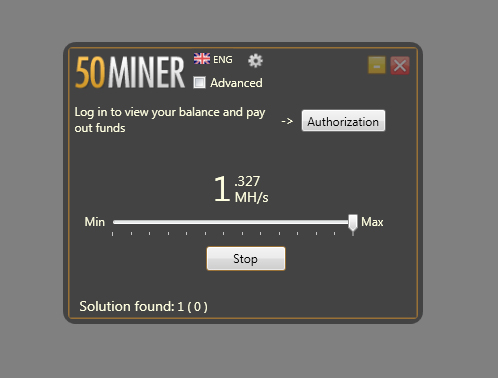
The commodities, which are not perishable, can be held back if prices are not favourable. As we assumed the different values of ‘P’ from
zero to 5, then assumptions of law of supply the calculated values of Qs increases from – 2 to 8. Where c and d are parameters while P and Qs
are independent and dependent variables, respectively.

Thus, the production of agricultural products cannot be increased beyond a limit. Therefore, even a rise in price cannot increase the supply of these products beyond a limit. Assumes that there is no speculation about prices in future, which otherwise can affect the supply of a product.
Determinants of Supply
9.3, supply curve SS slope upwards from left to right, indicating direct relationship between price and quantity supplied. It is the change in these factors that cause a shift in the supply curve due to the changes in factors other than price. 20.1, the quantity supplied has been measured along the X-axis and price of wheat has been measured along the Y-axis. It will be seen from this-figure that supply curve slopes upward from left to right, which indicates that as the price of wheat rises, quantity supplied increases and vice versa. This is in a sharp contrast to the demand curve of a commodity which slopes downward from left to right. It assumed that there is no change in cost of production because of the
profit decreases with the increase in cost of production and it causes the
decrease in supply.
- As a result of their observations, they have arrived at the law of supply.
- So, the suppliers supply more even at a low price due to fear of further fall in the price due to the worse condition in the economy.
- Supply of a commodity depends upon how the physical returns and costs change as more output of a commodity is produced.We are now to explain the law of supply and the concept of elasticity of supply.
- An action sale may occur at the situation when the seller is in a financial crisis and needs money at any cost.
- Therefore, at increasing prices, more firms are willing to enter the market to produce goods.
- This law is based on the assumption that producers are eager to make a profit and will produce more of a product if they can sell more of it for less money.
In case of the rise in marginal cost the firms would supply more only at a higher price so as to cover the rise in marginal cost when more quantity of output is produced by hiring additional variable inputs. As seen above, when production of a product is expanded by using more resources, diminishing returns occur. Due to the diminishing returns average and marginal costs of production increase. This implies that more quantity of commodity would be produced and supplied in the market only at a higher price so as to cover higher cost of production. Further, the changes in quantity supplied of a product following the changes in its price depends on the possibilities of substitution of one product for another.
Causes of positive slope of supply curve
When we draw a supply curve we assume that the prices of other products remain unchanged. Now, any change in the prices of other products would influence the supply of a product by causing substitution of one product for another. In addition, the number of suppliers available, the level of competition, the state of technology, and the presence of government support or restriction will play important roles. For certain products like agricultural commodities, supply is also impacted by things like weather and crop yields. The law of supply is the microeconomic law that states that, all other factors being equal, as the price of a good or service increases, the quantity of goods or services that suppliers offer will increase, and vice versa. It is also assumed that the taxation policy of government does not change.
SaverOne Announces New Contract Win with Diplomat- a Leading … – PR Newswire
SaverOne Announces New Contract Win with Diplomat- a Leading ….
Posted: Wed, 09 Aug 2023 12:00:00 GMT [source]
The positively sloping curve depicts the direct relationship between price and supply. Refers to the fact that the supply of a product decreases instead of increasing in present when there is an expected increase in the price of the product. In such a case, sellers would not supply the whole quantity of the product and would wait for the increase in price in future to earn high profits. Maximising profits is the primary goal of producers when they supply a good or service. Their profits grow when the price of a commodity rises without a change in costs. Therefore, by increasing production, manufacturers increase the commodity’s supply.
What is Law of Supply?
If the price is high, larger quantities of non- perishable commodities are offered by the sellers from their stock. And if the price is low, only small quantities are brought out for sale. Production costs like raw materials, labor costs, overhead costs and selling and administration may increase along with the increase in price. Such situations may not allow producer to sell his products at a particular higher price. The law of supply is one of the most fundamental concepts in economics. It works with the law of demand to explain how market economies allocate resources and determine the prices of goods and services.
If there is no speculation about products, then the economy is assumed to be at balance and people are satisfied with the available products and do not require any change. It presents the different quantities of a product that a seller is willing to sell at different price levels of that product. Law of supply expresses a relationship between the supply and price of a product. It states a direct relationship between the price of a product and its supply, while other factors are kept constant. During a given period of time, it is assumed that the scale of production is held constant.
The chart below depicts the law of supply using a supply curve, which is upward sloping. Each point on the curve reflects a direct correlation between quantity supplied (Q) and price (P). So, at point A, the quantity supplied will be Q1 and the price will be P1, and so on.
Law of supply definition economics assumption, examples
The graphical representation of supply schedule is called supply curve. In a graph, price of a product is represented on Y-axis and quantity supplied is represented on X-axis. Supply curve can be of two types, individual supply curve and market supply curve. Individual supply curve is the graphical representation of individual supply schedule, whereas market supply curve is the representation of market supply schedule. The law of supply is an economic law of nature that states that the quantity of a good supplied (i.e., of sellers’ goods offered for sale) will vary inversely with its price.

However, at a relatively lower price, the producers do not release big quantities from their stocks. They start increasing their inventories with a view that price may rise in near future. While discussing the topic we should know the difference between stock and supply.
If the number of firms producing a product increases, the market supply of the product will increase causing a rightward shift in the supply curve. When, in the short run, firms in an industry are making large profits, the new firms enter that industry in the long run and consequently the total production and supply of the product of the industry increases. On the other hand, due to losses if some firms leave the industry, the supply of its product will decline.

The basic aim of producers, while supplying a commodity, is to secure maximum profits. When price of a commodity increases, without any change in costs, it raises their profits. So, producers increase the supply of the commodity by increasing the production. On the other hand, with fall in prices, supply also decreases as profit margin decreases at low prices. Assumes that the price of a product changes, but the change in the cost of production is constant. This is because if the cost of production rises with increase in price, then sellers would not supply more due to the reduction in their profit margin.
Assumptions
Some of the goods are perishable which cannot be kept as a stock for a long time. Such types of goods are sold even if the price is decreasing where the law of supply does not apply. Law of supply is not applicable under the circumstances when there is an expectation of change in the prices of a product in the near future. Thus, supply of these goods cannot increase or decrease beyond a limit. In case of these goods, a rise or fall in price does not impact the supply. Auction can take place due to various reasons, for instance, a bank may auction the assets of a customer in case of his failure in paying off the debts over a period of time.
So, the farmers could not wait for the applications of the law of supply. The production of these products is dependent on so many factors which are uncontrollable, such as climate and availability of fertile land. According to the law of supply, if the price of a product rises, the supply of the product also rises and vice versa. Thus, the law of supply states a direct relationship between the price of a product and its supply. Similarly, if the price of the product decreases, the supplier would decrease the supply of the product in the market as he/ she would wait for a rise in the price of the product in the future.